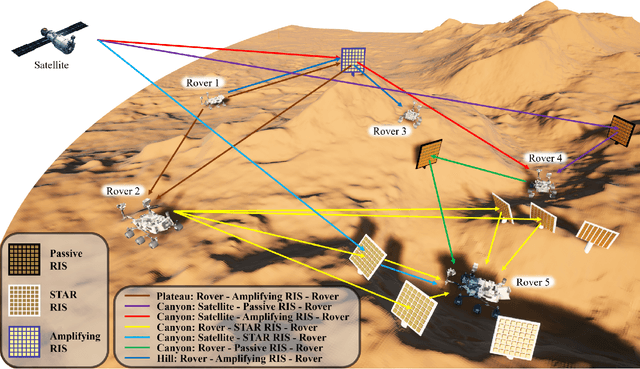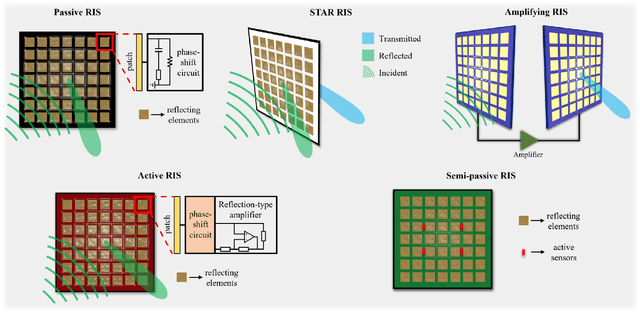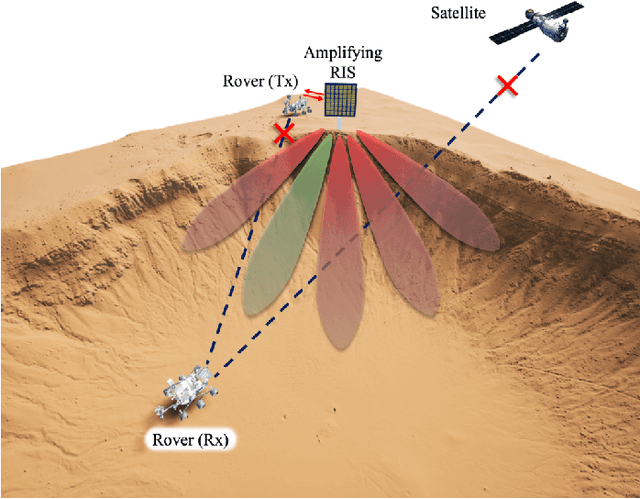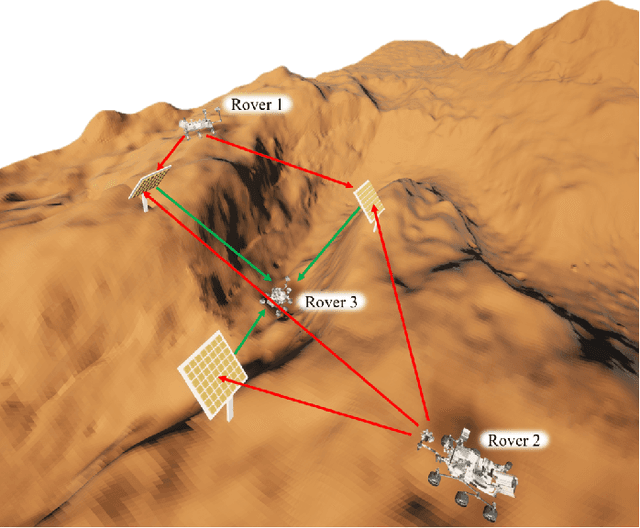Enes Koktas
Unleashing the Potential of Reconfigurable Intelligent Surfaces in Martian Communication
Aug 10, 2023



Abstract:Space exploration has witnessed a steady increase since the 1960s, with Mars playing a significant role in our quest for further knowledge. As the ambition to colonize Mars becomes a reality through the collaboration of private companies and space agencies, the need for reliable and robust communication infrastructures in the Martian environment becomes paramount. In this context, reconfigurable intelligent surface (RIS)-empowered communication emerges as a promising technology to enhance the coverage and improve the communication quality. By considering various Martian scenarios such as canyons, craters, mountains, and plateaus, this article explores of the potential of RISs in increasing the coverage in Martian environments, thereby enabling future Mars missions to be more robust and reliable. The article also investigates the application of RIS-assisted localization in both line-of-sight (LOS) and non-line-of-sight (NLOS) scenarios, presenting a general framework for accurate user angle estimation in challenging Martian conditions. The findings and presented framework of this article provide a promising research direction for integrating RISs in deep space communication as well as paving the way for future improvements in interplanetary communication networks.
Communications for the Planet Mars: Past, Present, and Future
Nov 25, 2022Abstract:Space exploration has been on the rise since the 1960s. Along with the other planets such as Mercury, Venus, Saturn, and Jupiter, Mars certainly plays a significant role in the history of space exploration and has the potential to be the first extraterrestrial planet to host human life. In this context, tremendous effort has been put into developing new technologies to photograph, measure, and analyze the red planet. As the amount of data collected from science instruments around and on Mars increased, the need for fast and reliable communication between Earth and space probes has emerged. However, communicating over deep space has always been a big challenge due to the propagation characteristics of radio waves. Nowadays, the collaboration of private companies like SpaceX with space agencies to make Mars colonization a reality, introduces even more challenges, such as providing high data rate, low latency, energy-efficient, reliable, and mobility-resistant communication infrastructures in the Martian environment. Propagation medium and wireless channel characteristics of Mars should be extensively studied to achieve these goals. This survey article presents a comprehensive overview of the Mars missions and channel modeling studies of the near-Earth, interstellar, and near-planet links. Studies featuring three-dimensional (3D) channel modeling simulations on the Martian surface are also reviewed. We have also presented our own computer simulations considering various scenarios based on realistic 3D Martian terrains using the Wireless Insite software. Path loss exponent, power delay profile, and root-mean-square delay spread for these scenarios are calculated and tabularized in this study. Furthermore, future insights on emerging communication technologies for Mars are given.
 Add to Chrome
Add to Chrome Add to Firefox
Add to Firefox Add to Edge
Add to Edge